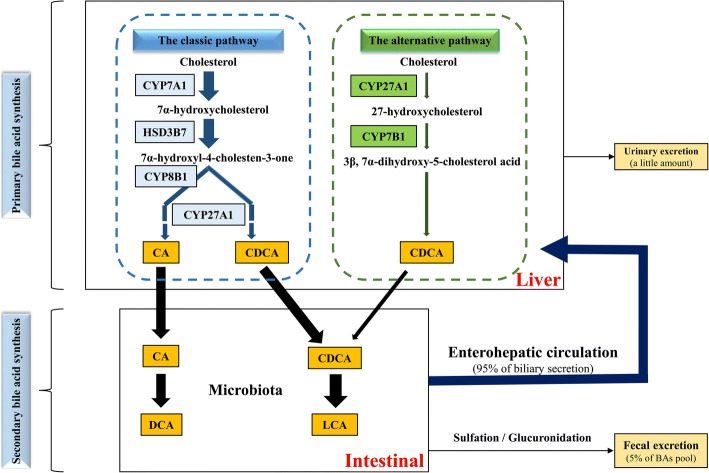Fig. 1.
Synthesis and metabolism of common bile acids in human. Two major biosynthetic pathways of bile acids are shown. The classic pathway accounts for over 90% of total bile acids in human. Cholesterol is converted to 7α-hydroxycholesterol by rate-limiting enzyme CYP7A1. Then 7α-hydroxycholesterol is converted to 7a-hydroxy-4-cholesten-3-one (C4) by HSD3B7. Under CYP8B1 and CYP27A1, C4 is converted to CA, and without CYP8B1, C4 is eventually converted to CDCA. In the alternative pathway, cholesterol is first converted to 27-hydroxycholesterol by CYP27A1, and then converted to 3β, 7α-dihydroxy-5-cholestenoic acid by CYP7B1. 3β, 7α-dihydroxy-5-cholestenoic acid is eventually converted to CDCA through a series of reactions. In intestine, CA and CDCA are converted to DCA and LCA through microbiota. About 95% of bile acids are reabsorbed in the intestine and transported back to the liver. This is called the enterohepatic circulation of bile acids. About 5% of the BAs pool is excreted with feces in a day

